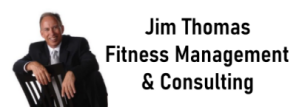How Broken Hiring Processes Sabotage Performance, Culture, and Profit—and What to Do Instead
Introduction: The Turning Point in My Third Club
I remember it vividly. I was working on launching my third gym. Business was good, but the demands were growing fast—and I was still a bit too hands-on for my own good. I was answering phones, training staff, giving tours, and helping fix the copier. It was too much.
I needed help. But more importantly, I needed the right kind of help.
We’d run ads, get 10–15 people into a training class, and hold onboarding Monday through Thursday. Each day, our managers would speak—sharing what they did well and what success looked like in their roles. Then we’d dive into hands-on training. Sure, many would no-show. Some would flake halfway through. But by the end of the week, we consistently had three or four quality team members who were bought in, trained up, and ready to hit the ground running.
That shift changed everything. Our turnover dropped. Our sales went up. And more importantly, our stress dropped dramatically because the people we hired were ready to perform from day one.
What we learned was this: a broken onboarding process is a silent killer of growth. Without an effective system in place, even the best marketing, sales tactics, or equipment upgrades can’t make up for the damage caused by undertrained, unmotivated, or misaligned staff.
Why Inefficient Onboarding is a Silent Killer
It doesn’t scream like a broken treadmill or an empty group class.
But poor onboarding quietly chips away at everything:
-
Your sales numbers
-
Member retention
-
Team morale
-
Operational consistency
-
Culture
-
Your personal time and sanity
The impact is often hidden in higher turnover, inconsistent performance, poor member experiences, and managers constantly “putting out fires.”
Common Onboarding Mistakes That Derail Growth
Let’s break down the most frequent (and fixable) mistakes gym operators make during onboarding:
1. No Structured Onboarding Plan
“Just shadow someone for a couple days and you’ll figure it out.”
This lack of structure leads to inconsistent training and a wildly different experience depending on who’s doing the onboarding. It sets up new hires to fail and sends a message that professionalism is optional.
2. Training Too Late
Training should start the moment the offer is accepted—not their first shift. Most gyms wait until a hire is “on the clock” to start training, which wastes the crucial first week when enthusiasm and buy-in are highest.
3. Focusing Only on Policies, Not Performance
Too many onboarding programs are HR-driven. They focus on rules and compliance, not how to win the day or grow the business.
4. One-Size-Fits-All Training
A front desk hire, a personal trainer, and a sales associate all have different success metrics—but they often get lumped into the same generic onboarding. This wastes time and dilutes effectiveness.
5. Failure to Assess Cultural Fit Early
You can teach skills, but you can’t teach hunger, urgency, or positivity. A bad cultural fit, left unchecked, becomes a virus in your gym culture.
6. No Benchmarks or Testing
If there’s no clear pass/fail system for onboarding, you’re just guessing. Would you let a personal trainer coach a client without testing them on programming or safety?
A Roadmap to World-Class Staff Onboarding
Done right, onboarding becomes your growth engine. Here’s a proven roadmap you can customize for your gym:
Step 1: Build an “Orientation to Ownership” Path
Goal: Convert new hires from observers to engaged operators of your business.
Action:
-
Share your origin story and vision on Day 1. Make it personal. People commit to a mission, not just a paycheck.
-
Review your core values and what you expect from top performers.
Step 2: Host Group Training Bootcamps
Just like I did in my third gym—run ads, bring in 10–15 people for a Monday–Thursday onboarding camp.
Why it works:
-
Filters out the unserious candidates (they self-select out).
-
Creates shared energy and team bonding.
-
Allows your best managers to lead sections and “sell” their roles to the recruits.
-
Ends with 3–4 fully trained, highly motivated staff.
Step 3: Use Departmental Deep-Dives
Have each manager or department head run a focused session:
-
Sales: Handling objections, tour flow, phone scripts.
-
Front Desk: Greeting protocols, POS systems, member experience.
-
Trainers: Member needs assessments, onboarding PT clients, retention strategies.
Each session should include role-playing, live scenarios, and written quizzes.
Step 4: Test, Certify, and Celebrate
At the end of training, test your hires:
-
Knowledge (written quiz)
-
Skills (role-play or on-floor demo)
-
Culture (scenario-based questions)
If they pass—certify them and celebrate publicly on your Slack, bulletin board, or team meeting. Make it a moment.
Step 5: Assign a Success Coach (Mentor)
Pair new hires with a team mentor for the first 30 days:
-
Weekly check-ins
-
Shadowing opportunities
-
Accountability partner
Step 6: Evaluate and Improve Continuously
Hold exit interviews with staff who leave. Audit team performance regularly. Get feedback on the onboarding experience and adjust as needed. This should be a living, breathing system.
The Results You Can Expect
When you build a proper onboarding system, here’s what starts happening:
-
You reduce staff turnover by 30–50%
-
Your sales and service performance consistently improve
-
Managers stop babysitting and start leading
-
The culture becomes stronger and more resilient
-
Members get a better, more consistent experience
-
You get more time to grow your business, not constantly refill positions
Final Thoughts
As gym owners, we often look to external factors—marketing, pricing, equipment upgrades—to fix lagging growth. But often, the issue is internal: Your team isn’t set up to succeed.
Your onboarding process is the foundation of everything. Nail this, and you unlock performance, attitude, and loyalty that marketing dollars can’t buy.
Remember:
Success isn’t about hiring bodies—it’s about building belief, skills, and culture from Day One.
Let’s build teams that win.
Need help building systems, improving your facility, or turning around your gym business? Contact Jim here.

Looking for Financing Options?
Take your gym business to the next level. Click here to explore tailored financing solutions, or contact us directly at 214-629-7223 or via email at jthomas@fmconsulting.net. Prefer to dive right in? mconsulting.net/Apply now or book an appointment for a personalized consultation.
Are you ready to sell your gym? Have a specific Gym Sales & Acquisitions question? Message me here and let’s chat! Or call/text at 214-629-7223.
The Best Gym Billing Software. Choosing the Right Gym Software Company: Key Elements for Independent Gym Owners and Entrepreneurs. Click here for more information.
Insurance Made Simple for Gym Owners & Personal Trainers
Protect your business and your future. Discover custom insurance solutions here.
Custom Apparel Without the Hassle
Get premium custom apparel for your gym with no inventory required. Click here to get started.
Is Your Gym in Need of a Boost?
Whether you’re facing declining sales, need a fresh marketing strategy, require a complete business turnaround or ready to start a new gym, we’re here to help. With over 25 years of industry expertise, we offer a free initial consultation to explore solutions tailored to your unique challenges. Don’t wait—contact Jim Thomas at 214-629-7223, or gain immediate insights from our YouTube channel. Connect with us on LinkedIn. EMAIL NEWSLETTER. Join for FREE.
Meet Jim Thomas
Jim Thomas is the Founder and President of Fitness Management USA, Inc., a premier management consulting, turnaround, financing, and brokerage firm specializing in the leisure services industry. With over 25 years of hands-on experience owning, operating, and managing fitness facilities of all sizes, Jim is an outsourced CEO, turnaround expert, and author who delivers actionable strategies that drive results. Whether it’s improving gym sales, fostering teamwork, or refining marketing approaches, Jim has the expertise to help your business thrive. Learn more by visiting his website or YouTube channel






